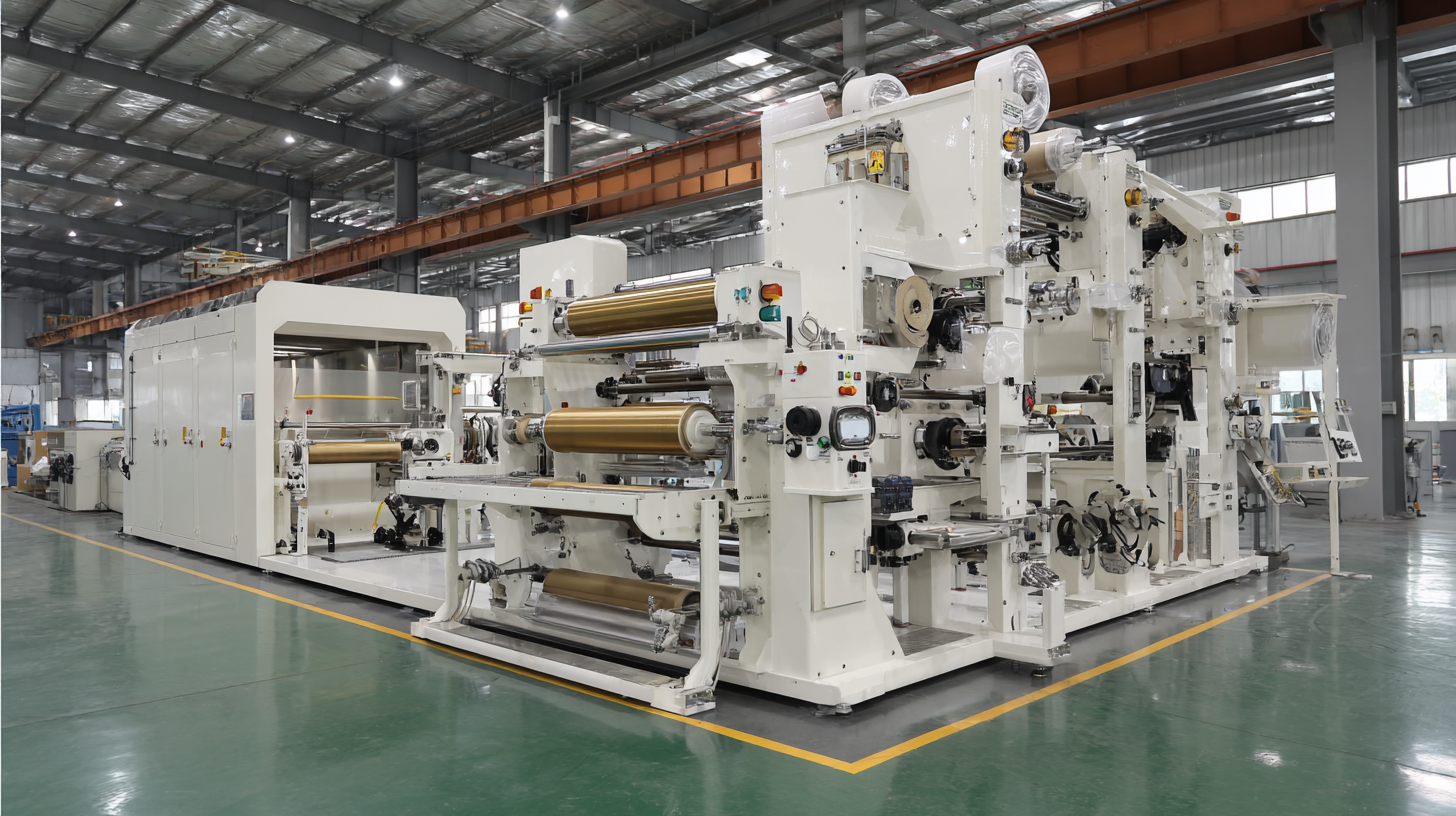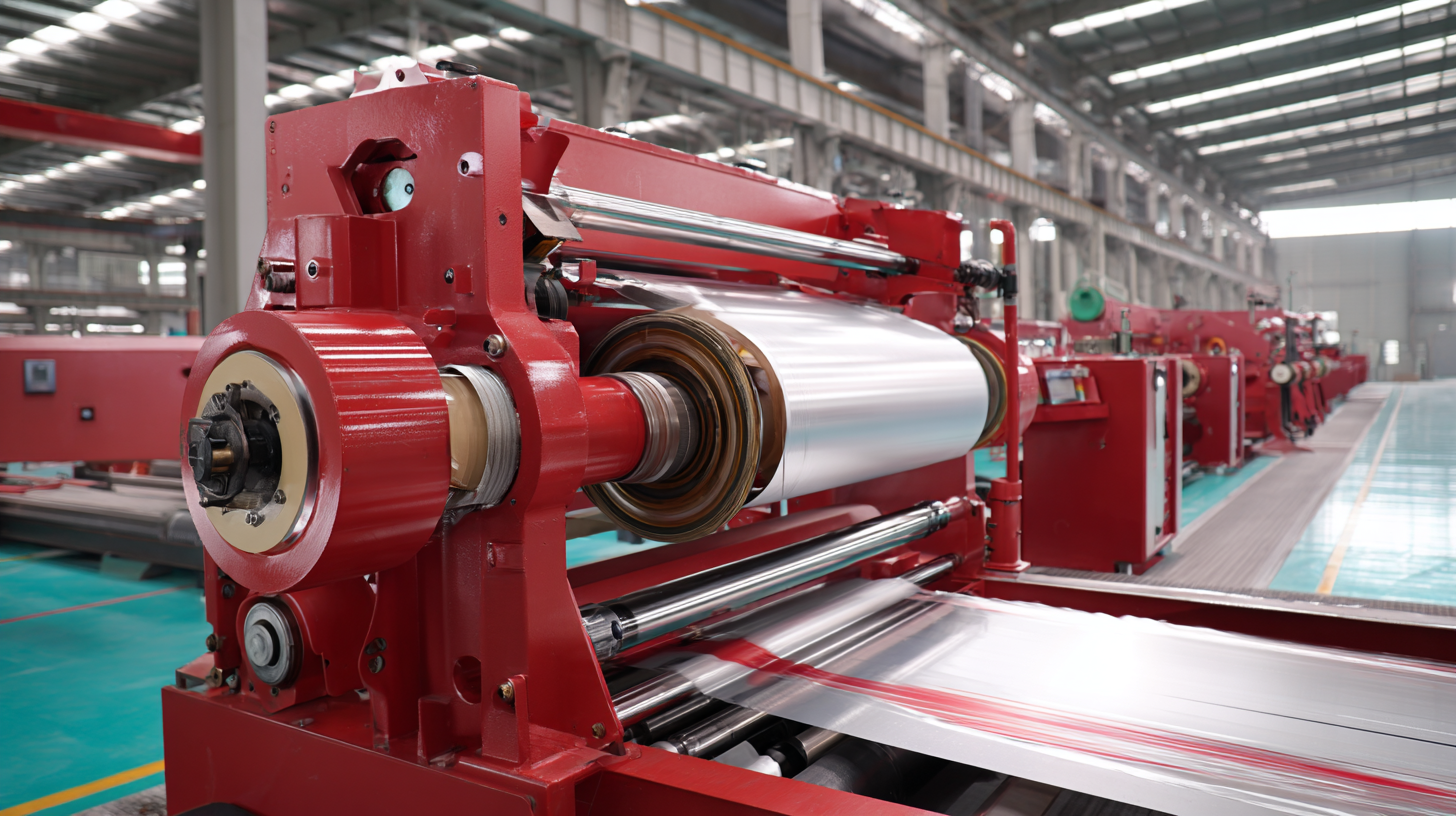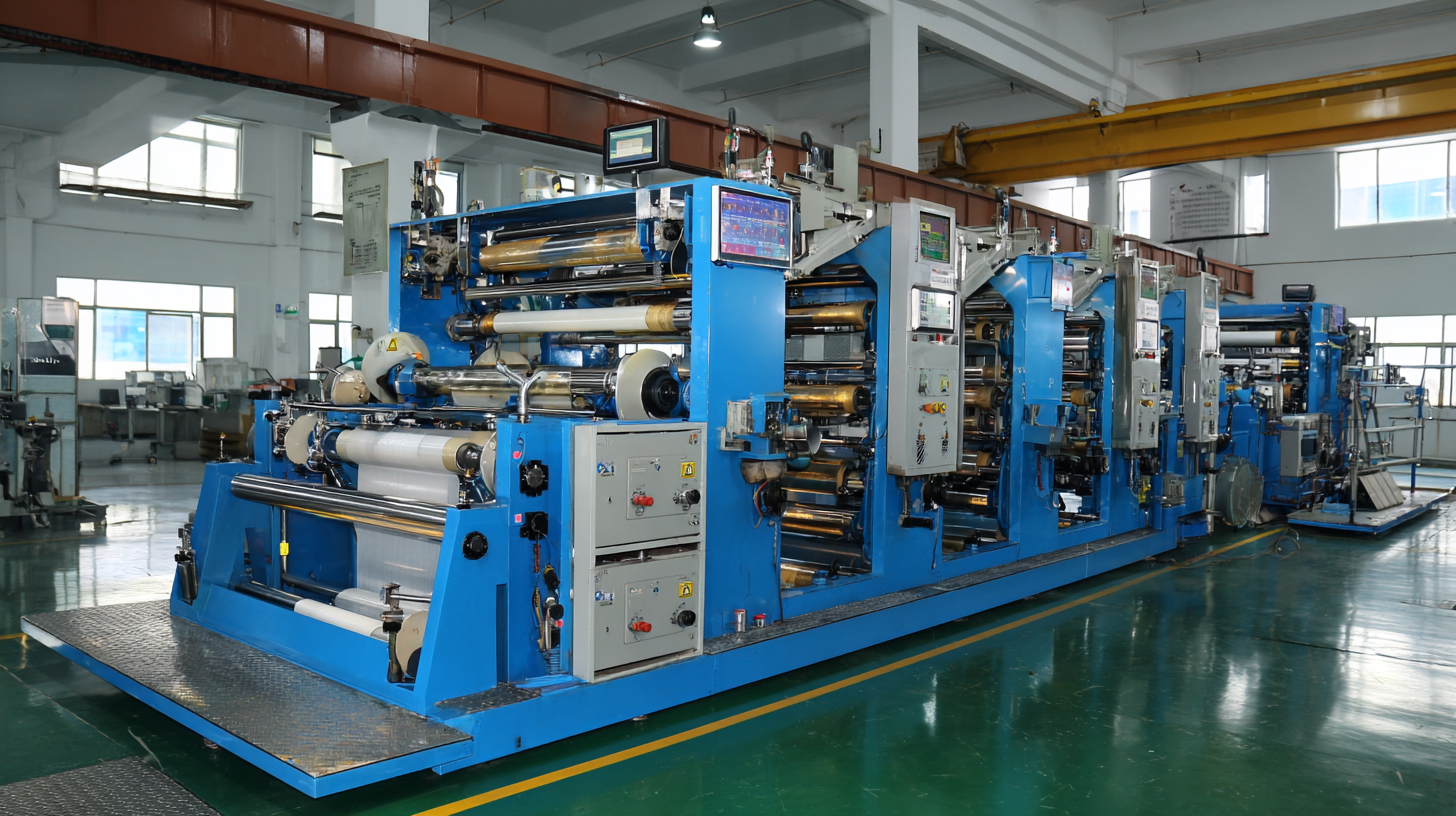
Discover the Unmatched Quality of the Best Slitting Machine from China's Leading Manufacturer
In the rapidly evolving manufacturing landscape, the importance of precision and efficiency cannot be overstated, particularly when it comes to the production of high-quality materials. The global slitting machine market, projected to reach $1.2 billion by 2027 with a CAGR of 3.5%, underscores the growing demand for advanced machinery that enhances operational effectiveness (Market Research Future 2023). As industries increasingly seek to optimize their processes, finding the right equipment becomes pivotal. Among the leaders in this arena stands China's premier manufacturers, renowned for delivering unmatched quality in slitting machines. These machines not only ensure accuracy in cutting various materials, but also promote sustainability through reduced waste, catering to a global market eager for reliable solutions. With a commitment to excellence, Chinese manufacturers are reshaping industry standards, offering products that embody durability and performance.

Exploring the Key Advantages of Top Slitting Machines in Today's Market
In today's competitive market, the demand for high-quality slitting machines has surged significantly, driven by advancements in automation and technology. These machines are pivotal in various sectors, especially in the garment industry, where precision cutting and efficient manufacturing processes are essential. The integration of robotics and artificial intelligence has transformed traditional slitting methods, allowing manufacturers to achieve superior accuracy and speed. As companies aim to streamline operations and reduce waste, the best slitting machines offer a distinct advantage, ensuring that businesses remain competitive.
Moreover, China has emerged as a leading innovator in this field, enhancing its production capabilities through advanced research and development. With universities and domestic companies collaborating on cutting-edge technologies, Chinese manufacturers are setting new standards for quality and efficiency in slitting machinery. As the trend towards enhanced big data applications continues to evolve, these advancements not only improve operational efficiency but also unlock new opportunities for manufacturers worldwide. Embracing these technological innovations is crucial for businesses looking to thrive in an ever-changing landscape.

Common Issues Faced by Users of Slitting Machines and Their Solutions
When operating slitting machines, users often encounter several common issues that can hinder performance and efficiency. A report from the International Journal of Production Research states that improper blade alignment can lead to a significant increase in waste, sometimes up to 15%. Ensuring that blades are sharp and correctly positioned is crucial to minimize defects and material loss during operation. Routine maintenance and calibration play vital roles in achieving optimal slitting precision.
Another prevalent issue is the variability in material thickness, which can cause uneven slitting and production bottlenecks. According to Machining Science and Technology, fluctuations in raw material can result in a 20% drop in production rates. To overcome this, manufacturers are encouraged to implement advanced quality control measures, including inline measurement technologies that monitor material consistency in real-time. Such innovations not only enhance the quality of the final product but also improve overall operational efficiency, allowing businesses to maximize output and reduce costs. Addressing these common slitting machine challenges ensures a seamless production process, thereby reinforcing the unmatched quality of top-tier machines from leading manufacturers in China.
Evaluating China's Leading Manufacturers: A Focus on Quality and Innovation
In the rapidly evolving manufacturing landscape, China has established itself as a leader in producing high-quality slitting machines. A recent industry report indicates that the global demand for slitting machines is projected to reach $1.5 billion by 2025, with Chinese manufacturers holding a significant share due to their emphasis on innovation and quality. Companies like HONGDA and RUIHAI consistently implement cutting-edge technologies, enhancing the efficiency and precision of their machines for a range of applications.
When evaluating these leading manufacturers, it is essential to focus not only on the specifications of the machines but also on their commitment to quality assurance. An estimated 75% of manufacturers in this segment adhere to global standards such as ISO 9001, ensuring that each slitting machine produced meets rigorous quality benchmarks. This dedication translates into reliability and performance, making Chinese slitting machines a preferred choice for businesses worldwide.
**Tips:** When selecting a slitting machine, consider assessing the manufacturer’s certifications and track record in quality control. Additionally, look for options that offer advanced features such as programmable settings for enhanced customization. Engaging directly with manufacturers can also provide insights into their R&D efforts and future innovations, guaranteeing that you invest in a machine that stands the test of time.
How to Choose the Right Slitting Machine for Your Business Needs
When choosing the right slitting machine for your business needs, several factors come into play, particularly considering the diverse applications and advancements in technology. The market for slitting machines is experiencing substantial growth, driven by increasing demand across various industries such as packaging, automotive, and textiles. Understanding the type of material you'll be processing is crucial, as different machines are optimized for different substrates and cutting requirements.

Additionally, technology plays a pivotal role in selection. Users should evaluate machines based on their technology types, which may include mechanical, electronic, or hybrid systems. By distinguishing between these options, businesses can determine which machine suits their production needs while also considering efficiency and operational costs. It's also essential to assess the after-sales support and service provided by manufacturers, especially as the industry grapples with changing market dynamics post-COVID-19, which has emphasized the need for reliable sourcing and machine performance.
The Future of Slitting Technology: Trends and Innovations to Watch
As the slitting industry evolves, innovative technologies are set to redefine productivity and efficiency. One of the most notable trends is the integration of automation in slitting machines, allowing for precise adjustments and real-time monitoring of the slitting process. This not only enhances operational accuracy but also reduces waste, making the manufacturing process more sustainable. Manufacturers are heavily investing in research and development to incorporate smart technologies such as IoT and AI, enabling machines to self-optimize based on material characteristics and production requirements.
Additionally, advancements in blade technology are leading to sharper and more durable cutting edges that can handle a wider variety of materials. This is crucial for industries demanding high precision and quality in their output. Furthermore, manufacturers are exploring eco-friendly materials and energy-efficient designs to meet growing environmental regulations and consumer demands for greener products. As these trends continue to emerge, they will play a pivotal role in shaping the future landscape of slitting technology, positioning leading manufacturers at the forefront of this dynamic market.
Trends in Slitting Machine Technology
This chart illustrates the increasing adoption rates of advanced slitting technology innovations over recent years, highlighting key features such as automation, precision, and efficiency improvements.